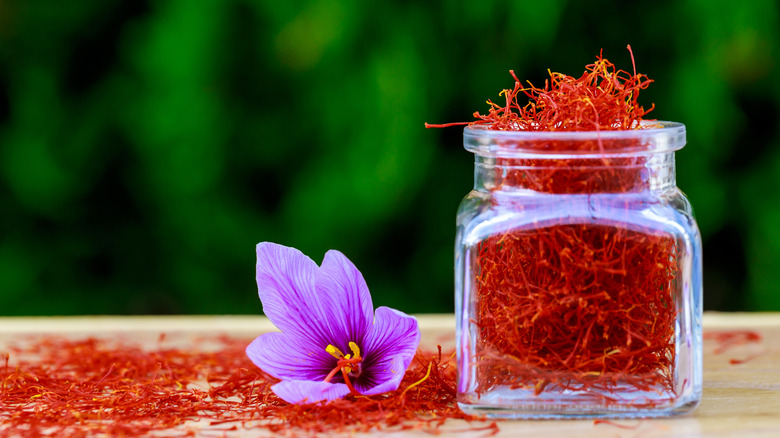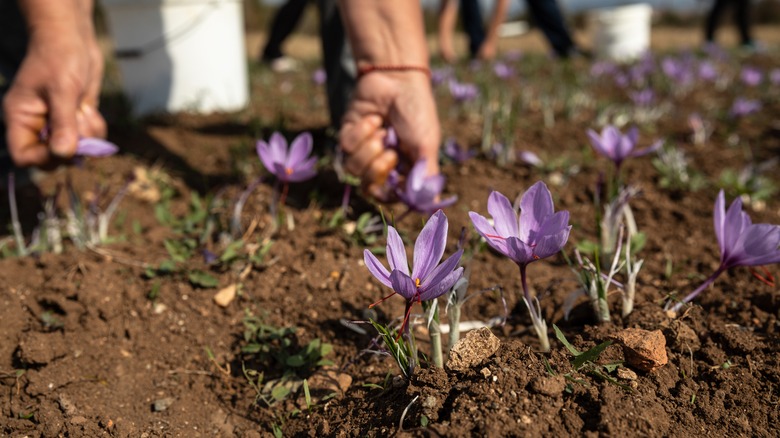Why The Most Expensive Spice In The World Is Settling In Vermont
What comes to mind when you think of luxury food items? If you're looking to splurge on a meal, you might seek out some high-quality seafood or find a dish that's topped with plenty of truffles. Although spices might not come to mind when you think about pricey menu items, saffron is the most expensive spice in the world and retails for around $5,000 per pound. Thanks to its high price point, one of saffron's nicknames is "red gold." The country that produces most of the world's saffron is Iran, but over the past few years, saffron has been making its way as a crop in the United States.
According to Saveur, the Pennsylvania Dutch have been growing saffron in the U.S. for 300 years, using it in dishes and to treat illness. But now, Vermont is a growing hotspot for saffron farmers because of the work of professor Margaret Skinner and agroecologist Arash Ghalehgolabbehbahani.
Modern Farmer explains that these two scientists have grown saffron in Vermont that "held up in quality and yield to samples from Iran, Spain and Italy" and also give workshops on how to grow saffron in the state. Wondering how Vermont became a spot for saffron farming in sudden years? It's because of climate change.
Vermont's changing climate makes the state a more appealing spot to grow saffron
Vermont's climate has been rapidly changing, and the University of Vermont's 2021 Climate Assessment found that there's more rain in the state, and the winter and snow season is becoming shorter. The changes in weather and climate mean that the usual crops Vermont produces are getting more difficult to grow, but the state is turning into the right climate for saffron.
The Washington Post reports that Skinner founded North American Center for Saffron Research & Development, which is located in Burlington, and Skinner says that it's important for farmers to diversify their crops to adapt to the climate. According to The Post, in Vermont, saffron is planted at the end of the summer before blooming in the fall, and since saffron gets replanted every three to five years, the soil becomes more healthy in addition to being able to store more carbon.
While saffron gets the opportunity to thrive in Vermont, not all crops are doing well. Global wheat supplies have been negatively affected by climate change, and other food supplies have to adapt in light of climate change. For example, the sushi industry is looking at vegan options and alternative fish supplies for a more sustainable future.

